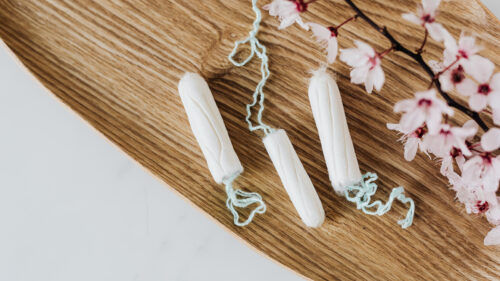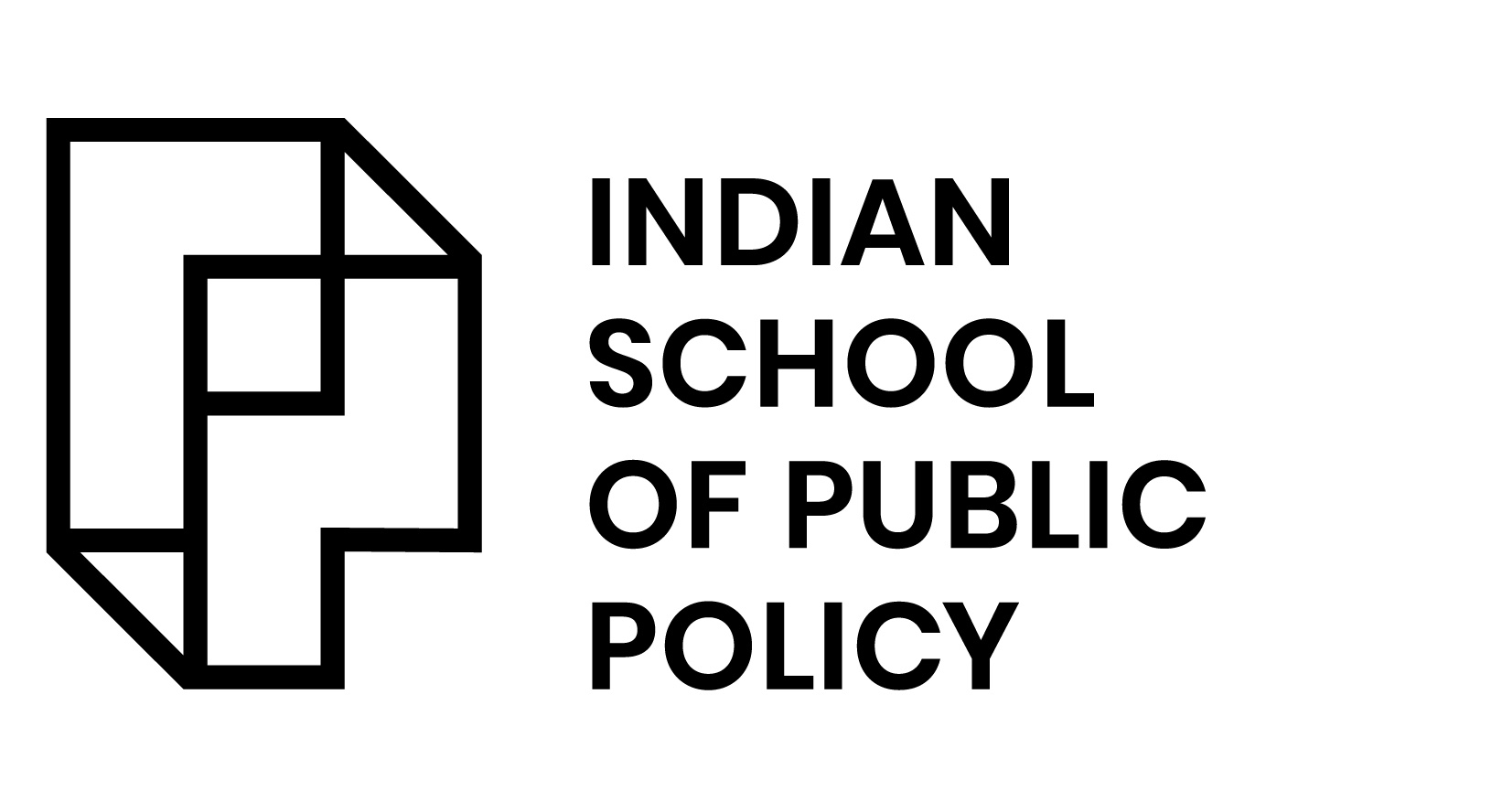
Menstrual Health Policy: A Case of Deflection from Action

Introduction
The discourse on menstruation did not always enjoy the same attention it does today. In fact, the period between 1990-2000 was referred to as a “wall of silence: poor menstrual hygiene not recognized as an issue; absence of literature” by Dasra, an Indian philanthropy foundation that researched the Menstrual Health Management (MHM) landscape in India1. In 2005, an Oxford Roundtable, jointly sponsored by UNICEF and the International Rescue Committee (IRC), brought explicit attention to menstrual issues impacting schoolgirls. The UNICEF strongly advocated for girl-friendly sanitation facilities – toilets that are fully private, located in secure areas away from boys’ toilets and equipped with facilities for menstrual hygiene.2
In 2007, WaterAid awakened the collective consciousness of menstrual health needs in India. In January, an adolescent girl from Madhya Pradesh spoke to WaterAid staff about challenges faced during menstruation. This triggered a conversation around menstrual hygiene, which was addressed through training programs, workshops and women’s self-help groups organised by WaterAid in collaboration with UNICEF. As NGOs and governments scrambled to take the first step, capitalist enterprises like Procter & Gamble chose to profit from their range of period products, given the increased importance menstrual hygiene gained.
As companies started competing for market share by creating partnerships with local bodies, the narrative of menstruation became product-centric, deflecting from the source of the problem – the social taboo. The product approach was based on a misguided assumption that the lack of menstrual hygiene led to social taboo. In reality, it was the social taboo that inhibited progress in menstrual hygiene, relegating menstruation as an issue to be managed as opposed to a normal biological process.
Market norms have convinced society that sanitary napkins are the solution to social taboo, so much so that the government followed suit by providing sanitary napkins at affordable rates through schemes like the Freeday Pad scheme and Suvidha pads under the Menstrual Hygiene Scheme. It is essential for period products to be available, affordable, and accessible. However, ignoring the need for lifecycle menstrual education, sanitation infrastructure, and special provisions to address the social taboo of menstruation is curtailing menstrual health and education from reaching full potential.
This paper aims to critically analyse schemes launched by the government such as the Menstrual Hygiene Scheme (MHS) and Adolescent Friendly Health Clinics (AFHCs) under Rashtriya Kishor Swasthya Karyakram (RKSK) against the backdrop of the current health system and unaccommodated menstrual health needs.
Knowledge and Gaps
Many studies show the importance of increasing general awareness about menstrual hygiene. Rahatgaonkar. VG et al., highlight the need for introducing counselling sessions and menstrual health education activities for adolescent school girls with both parent and teacher participation3, Bachloo. T., Kumar. R et al. recommend incorporating menstrual health in the school curriculum4. Phillips-Howard. P.A., Hennegan. J et al., express disappointment in the Guttmacher-Lancet Commission’s reductive approach to menstruation and champion inclusion of menstrual health education as a component of sexual and reproductive health and rights globally5.
Tackling menstrual health becomes important as a large number of adolescent girls experience severe pain and weakness due to menstruation. Bachloo et al., find that 77.6% and 66.2% (n=358) of the adolescent girls report pain in the abdomen and legs, respectively. Holambe et al. state that 60.71% and 59.52% (n= 252) of college-going girls in Latur city experience pain in the abdomen and weakness as symptoms.6 Rahatgaonkar. VG et al., record that 66.9% (n=471) of adolescent girls experience painful menses. Smitha et al., (2016) observe that 72% (n=700) of adolescent girls experience one or the other symptoms during menstruation. 7
The government launched the Reproductive, Maternal, Newborn, Child and Adolescent Health Strategy (RMNCH+A) in 2013. These programmes focus exclusively on reducing maternal and child morbidity and mortality. An additional dimension of adolescent health was added to ensure lifecycle coverage. The predecessors of this strategy – Reproductive and Child Health (RCH) and RCH – II were launched in 1997 and 2005, respectively. The strategies focused solely on reproductive and child health.
In 2014, Rashtriya Kishor Swasthya Karyakram (RKSK) was put in motion to expand the narrow focus of RMNCH+A, “limited to sexual and reproductive health.” It now includes nutrition, injuries and violence, non-communicable diseases, mental health, and substance misuse. The Adolescent Reproductive Sexual Health Clinic was initiated in 2006 under RCH-II, and the clinic exclusively provided counselling on sexual and reproductive health issues. These ARSH clinics were rebranded as Adolescent Friendly Health Clinic Services (AFHCS) under RKSK in 2014 to include the expanded objectives.
According to UNICEF, India is home to 253 million adolescents who make up 20.9% of the total population. The Menstrual Health Scheme programme under RKSK disproportionately focuses on sanitary napkins, has inadequate training modules and reading information for Auxiliary Nurse Midwives (ANMs) and adolescents. The Adolescent Friendly Health Clinics, on the other hand, do not cater to the menstrual health disorders observed in the adolescent population. Adolescents under the MHS are unequipped to understand menstrual symptoms, hindering their menstrual health-seeking behaviour. Among the reasons for not seeking treatment, a perception that their symptoms were normal or a lack of perception about the severity of symptoms were notable. Thus, the MHS programme and AFHCS under RKSK take a narrow approach to menstrual health. Current health care programmes are, therefore, ignoring menstrual health needs of adolescent girls.
Holambe and others reported that of college-going girls in Latur city, 56% seek help from their mothers, 8% visit a doctor, and 6% seek help from a pharmacist. Rahatgaonkar. VG et al., recorded that 33%, 26.7%, and 25.7% of the girls with cycle irregularity, painful menses, and high menstrual bleeding respectively visited a doctor for their symptoms. Additionally, it also reported that approximately 19% of adolescent girls face debilitating effects from menstrual symptoms.
Studies have shown that the exclusion of menstrual health from government schemes targeting reproductive health has dire consequences. Tariq. N., Hashim. MJ et al., cite Sharma. P., Malhotra. C et al., 17% of adolescent girls in India reported missing school due to dysmenorrhea8. Smitha. MC, Narayana. MMR et al., observe 60.2% of adolescent girls seek help. While 43.4% sought advice from family members, 39.2% visited doctors, and 22.5% asked friends. On average, 22.1% to 43% exhibited help-seeking behaviour for menstrual symptoms.
Despite the presence of AFHCs across the country, a significant percentage (58%) of young women seek help for menstrual problems from private facilities. In comparison, 15.9% seek help from government facilities, 15.7% from informal bodies, 14.2% from friends and family members, and only 4% and 5% from ASHA and ANMs, respectively. Less number of young women seeking help from AFHCs is an indicator of a deficit in the system. It can be attributed to a highly fragmented system with uneven health care delivery, lack of privacy, and fear of embarrassment.9
AFHC services are provided by medical officers, ANMs, and counsellors at primary health centres, community health centres, district hospitals, and medical colleges. The ANMs and counsellors are trained to counsel and refer the adolescents to medical officers in cases of menstrual disorders such as primary and secondary amenorrhea, primary dysmenorrhea, and premenstrual syndrome. However, other common menstrual disorders such as abnormal uterine bleeding, menorrhagia, metrorrhagia, hypermenorrhea, secondary dysmenorrhea, and premenstrual dysphoric disorder are overlooked. Considering that underlying menstrual disorders can be a sign of significant medical conditions with negative long-term health consequences for both physical and mental health, the clinical practice for menstrual disorders at AFHCs is inadequate.
Discussion
The undue emphasis on period products, tunnelled focus of MHS programs on hygiene, exclusion of comprehensive lifecycle approach to menstrual health education, and lack of intervention in addressing the social taboo of menstruation have left the society burdened with the inability to access menstrual health care needs.
The MHS programme is insufficient to promote menstrual health education, thus hindering the progress towards achieving Sustainable Development Goals 3, 4, 5, and 8 through the following pathways.
Failure to ensure healthy living (SDG 3) can be attributed to a lack of knowledge that affects symptom perception and constrains menstrual symptoms’ or disorders’ health-seeking behaviour. Many adolescent girls have reported missing school due to painful menses and heavy bleeding, establishing the need for menstrual health care interventions without which SDG 4 i.e. inclusive and equitable quality education cannot be achieved.
The absence of policies that specifically address social taboo and myths related to menstruation is causing feelings of disempowerment without the dignity of menstruation to the extent that a 13-year-old girl in Tamil Nadu died by suicide after being allegedly shamed for menstruation.9 With the current prevalence of social taboo on menstruation, achieving gender equality and empowerment (SDG 5) seems far-fetched.
Persistent menstrual symptoms that affect everyday activities impede labour participation of women in the economy. The disregard for menstrual health during adolescent development may lead to delayed diagnosis of potential chronic conditions, further leading to the burden of out-of-pocket expenditure and financial risk. This will lag the progress of full and productive employment and decent work for all (SDG 8).
The MHS programme must include a comprehensive lifecycle menstrual health education covering a wide range of topics from menarche to menopause. It will improve menstrual health-seeking behaviour by improving knowledge and perceptions of the symptoms. The implementation guidelines of RKSK place only menstrual hygiene under sexual and reproductive health, compounding the barriers to seek menstrual health care. Improving the current clinical practices of the AFHCs to include robust screening and diagnostic tools, access to ultrasound is the need of the hour. This will help in the early diagnosis and treatment of any underlying conditions that exhibit menstrual disorders and decrease the average time of diagnosing any underlying conditions such as endometriosis.
References
- Bobel. C (2018). The Managed Body: Developing girls and menstrual health in the Global South. Palgrave Macmillan
- UNICEF/IRC (2005). Water, Sanitation and Hygiene Education for schools Roundtable Meeting. Oxford, UK. https://www.unicef.org/french/wash/files/SSHE_OxfordRoundTable_2005.pdf
- Rahatgaonkar. V.G., Watankar. A.H., Oka. GA, & Kambte. VS (2018). Menstrual disorders and treatment seeking behaviour of adolescents, International journal of community medicine and public health, 5(10), 1-6. Doi: 10.18203/2394-6040.ijcmph20183886
- Bachloo. T., Kumar. R., Goyal. A., Singh. P., Yadav. S., Bharadwaj. A., & Mittal. A (2016). A study on perception and practice of menstruation among school going adolescent girls in district Ambala, Haryana, India, International Journal of community medicine and public health, 3(4), 931-937. Doi: 10.18203/2394-6040.ijcmph20160931
- Phillips-Howard. P.A., Hennegan. J et al., (2018). Inclusion of menstrual health in sexual and reproductive health and rights, The Lancet, vol. 2.
- Holambe. V.M., Thakur. NA, & Wadagale. AV (2013). Pattern of menstruation and health seeking behaviour of college going girls in Latur city, Maharashtra, International journal of recent trends in science and technology, 8(3), 224-227.
- Smitha. MC, Narayana. M. M. R., Srinivasa. B.M., & Renuka. M (2016). Adolescent menstrual health: Profoundness of the problems and the rationale behind denial of treatment, National journal of community medicine, 7(6), 499-504.
- Tariq. N., Hashim. M. J., Jaffrey. T., Ijaz. S., Sami. S. A., Badar. S., & Ara. Z (2009). Impact and health care seeking behaviour of premenstrual symptoms and dysmenorrhea, British journal of medical practitioners, 2(4), 40-43.
- India Today Desk. (2017, August 30). 13-year-old girl scolded for ‘period stains’ commits suicide by jumping off the terrace. India Today. https://www.indiatvnews.com/buzz/life-tamil-nadu-teenage-girl-scolded-by-school-teacher-for-menstrual-blood-commits-suicide-398884
- Santhya, K. G., R. Prakash, S et al., (2014). Accessing Adolescent Friendly Health Clinics in India: The Perspectives of Adolescents and Youth, Population Council, 12-19.
- Dixit. G.T., Jain. S et al., (2017). Adolescent Friendly Health Services: Where are we actually standing? International Journal of community medicine and public health, 4(3), 820-824. Doi: 10.18203/2394-6040.ijcmph20170765
- Jena. P., Andalib. S., Khuatia. S., & Mishra. A (2017). Spectrum of menstrual disorder and health consciousness of adolescent school going girls: a competitive study between two socio-economic group, Indian journal of Obstetrics and Gynaecology Research, 4(3), 235-239. Doi: 10.18231/2394-2754.2017.0053
- Kabir. A., Saha. N.C., Wirtz. AL, & Gazi. R (2014). Treatment seeking for selected reproductive health problems: behaviours of unmarried female adolescents in two low performing areas of Bangladesh, Reproductive Health, 1-7. Doi: 10.1186/1742-4755-11-54
- Menstrual Hygiene Management Needs in Schools, PLoS Med, 13(2), 1-9.
- National Health Mission, Government of India (2014). Adolescent Friendly Health Clinics. https://nhm.gov.in/index1.php?lang=1&level=3&sublinkid=1247&lid=421
- National Health Mission, Government of India (2011). Menstrual Health Scheme. https://nhm.gov.in/index1.php?lang=1&level=3&sublinkid=1021&lid=391.
- UNICEF. The State of the World’s Children. Adolescence: An Age of Opportunity. New York: UNICEF; 2011. p. 138.
The views expressed in the post are those of the author and in no way reflect those of the ISPP Policy Review or the Indian School of Public Policy. Images via open source.

